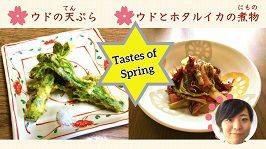
Spring in Japan
Japan is often said to be a land of four seasons. But there are actually a lot stages of the seasons including early, mid and late seasons.
With early spring in the air, there are a lot of indications of the changing of the season, apart from the gradually warming days. There are special fruits and vegetables that become edible at this time, and there are plants and animal reactions to the weather that are fascinating.
In this blog for Japanese learners, Japanese teacher Miki Oosawa talks about some special signs of spring in her hometown of Nagano. You can listen to the blog with the YouTube video and also learn new vocabulary and Kanji too.
我が家の春の味
Our house's taste of spring

By OOSAWA Miki
私は長野県のある小さな町で育ちました。私の町では3月になってもまだ寒い日が多いですが、風の匂いや、雪の下から出てくる花の芽を見ると春を感じます。
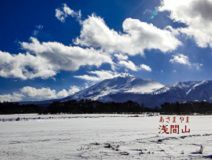
毎年春になると、父が家の敷地の山から山菜を採って来ます。山菜とは、山などに自生している食べられる植物のことです。3月ごろから山には「フキノトウ」や「タラの芽」をはじめ、いろいろな山菜が出てきます。子供の頃はなんだか苦くて変な味だと思っていましたが、大人になるにつれてそのおいしさが分かるようになりました。
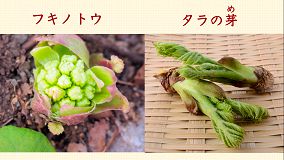
我が家の食卓にのぼる代表的な山菜は「ウド」です。昔は祖母がよく天ぷらにしたり、ホタルイカと煮物にしたりしてくれました。今では日本酒のお供に、自分でも作るようになりました。ウド独特の苦味の中に爽やかな風味があり、私はこれを食べるとようやく春が来たと感じます。
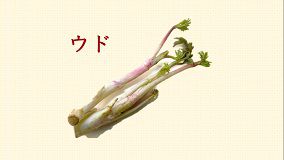
皆さんの国にも季節を感じられる食べ物はありますか?
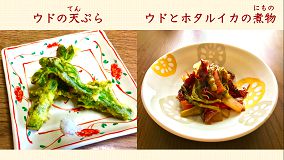
To listen to this blog, please watch our Youtube video.
我(わ)が家(や)の春(はる)の味(あじ)
私(わたし)は長野県(ながのけん)のある小(ちい)さな町(まち)で育(そだ)ちました。私(わたし)の町(まち)では3月(がつ)になってもまだ寒(さむ)い日(ひ)が多(おお)いですが、風(かぜ)の匂(にお)いや、雪(ゆき)の下(した)から出(で)てくる花(はな)の芽(め)を見(み)ると春(はる)を感(かん)じます。
毎年(まいとし)春(はる)になると、父(ちち)が家(いえ)の敷地(しきち)の山(やま)から山菜(さんさい)を採(と)って来(き)ます。山菜(さんさい)とは、山(やま)などに自生(じせい)している食(た)べられる植物(しょくぶつ)のことです。3月(がつ)ごろから山(やま)には「フキノトウ」や「タラの芽(め)」をはじめ、いろいろな山菜(さんさい)が出(で)てきます。子供(こども)の頃(ころ)はなんだか苦(にが)くて変(へん)な味(あじ)だと思(おも)っていましたが、大人(おとな)になるにつれてそのおいしさが分(わ)かるようになりました。
我(わ)が家(や)の食卓(しょくたく)にのぼる代表的(だいひょうてき)な山菜(さんさい)は「ウド」です。昔(むかし)は祖母(そぼ)がよく天(てん)ぷらにしたり、ホタルイカと煮物(にもの)にしたりしてくれました。今(いま)では日本酒(にほんしゅ)のお供(とも)に、自分(じぶん)でも作(つく)るようになりました。ウド独特(どくとく)の苦味(にがみ)の中(なか)に爽(さわ)やかな風味(ふうみ)があり、私(わたし)はこれを食(た)べるとようやく春(はる)が来(き)たと感(かん)じます。
皆(みな)さんの国(くに)にも季節(きせつ)を感(かん)じられる食(たべ)べ物(もの)はありますか?
Our house's taste of spring
I was raised in a small town in Nagano prefecture. In my town, even when March came along, there were still a lot of cold days, but when I catch the scent of wind or see the flower buds poking out from under the snow, I get a sense of spring.
Every year in spring, my father would go and gather 'san sai' plants from the mountain on our plot. 'San sai' plants are edible plants that grow wild in the mountains. There are a variety of edible wild plants that grow in the mountains, starting with 'fukitou' (or Japanese butterbur) and 'tara no ki' (Japanese angelica tree) in March. When I was a child I used to think that these plants tasted bitter and strange, but the older I get, the more I have become able to appreciate their flavour.
But the key wild edible plant that is served at our house is 'Udo' (or Aralia cordata). In the old days, my grandmother used to make Tempura out of them, or simmer them with sparkling Enope squid. Now I have learned to make it myself as a treat that goes well with Sake. Within the unique bitter flavour that 'Udo' has, there is a fresh taste that whenever I eat it, I feel that spring has come.
Do you have any particular food in your country that make you feel the spring season?
春(はる)の味(あじ) a taste of spring
風(かぜ)の匂(にお)い scent of wind
花(はな)の芽(め) flower bud
山菜(さんさい) edible wild plants
自生(じせい)している grow wild
食卓(しょくたく)にのぼる serve up
煮物(にもの) simmered food
お供(とも) go well with
苦味(にがみ) bitter taste
爽(さわ)やかな風味(ふうみ) fresh taste
While all of you may have a different goal, there is one common purpose that you all share, which is to use the Japanese language in order to achieve something. I would be really glad if by learning Japanese here at JOI with me, and with your peers we can help to influence your life – even a little.
When I was a child, I used to perform a musical instrument, and played various kinds of music including pop and jazz. I also love to look at old buildings like temples and shrines and so I often travel. In my class, I would like to introduce some of Japanese culture and the traditions, through learning Japanese, and also introduce some of the characteristics of Japanese people. Lets face our goals together and go for it !



